Summary In April 2016 an allotment plot was planted with osiers (willow) to recreate a bed to allow first-hand experience to be gained of a once thriving village industry. The three species triandra, viminalis and hybrid red will provide willow suitable for such applications as basketwork and willow sculptures.
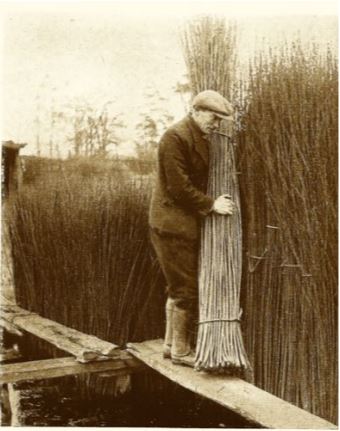 |
|
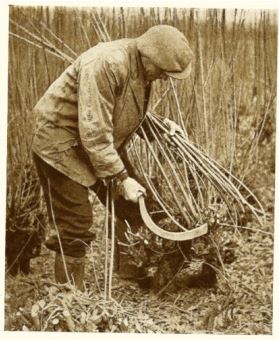 |
The series of four sepia photographs in this paper shows harvesting, pitting, stripping and drying in Twyford. They were in a book called Woodland Crafts in Great Britain by H L Edlin published in 1952. These were the catalyst to start the project. In addition the opportunity to celebrate a successful harvest with an 'osier stripping party' with local beer and cheese was an attraction! Basket making was an additional goal but those plans would be developed later as needed. |
| This idea came from the digitising of the History Society's back-catalogue of 51 Journals that were only available as paper copies. That process revealed many references to osier beds and associated activities within the villages. The willow industry flourished from the middle of the 1800s until 1952 when the Excell's family business ceased operating. Some willow was used by local basketmakers but most was sent into London by train. The History Society wanted to raise the profile of this past craft and raise awareness within the community of the impact that the humble willow had in this area. There was very little evidence around and what there was, was not very accessible | 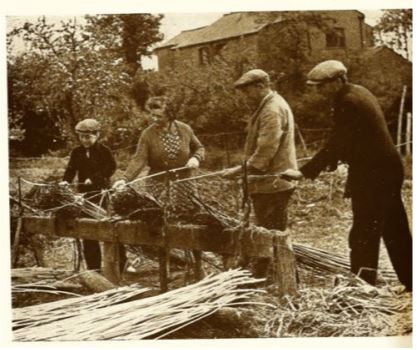 |
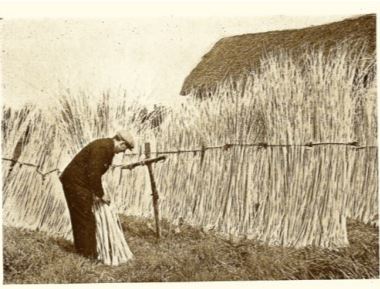 |
Osier set planting occurred in mid April 2016 after the chance of a severe frost had passed and by late June 90cm of growth was recorded. However, after an overnight raid by roe deer ate all the growing tips and the osiers have bushedout. Subsequent nightly visits have decimated the crop and an industrial 2m high fence now protects it. As inconvenient as this setback may appear it is not necessarily the end because this year's crop will be cut to the ground in the December harvest after the leaves have fallen from this deciduous tree. The bed is expected to take three years to establish. |
| The plan to create a pitting pool on the second plot will be started over the winter months. Graham Starkie Twyford and Ruscombe Local History Society | |
| Note 1. The four photographs (above) are by C F F Snow and were published in Woodland Crafts in Great Britain by H L Edlin. They are used with permission of David and Charles and F&W Media International LTD. Exeter EX2 5SP. | |
|
THE OSIER BED A selection of suitable sites was considered for the bed: Ruscombe Wood, The Piggott School and a local allotment. The favoured site turned out to be two plots on the Hurst Road allotments that had been declared unusable for normal horticultural activity because they were subjected to occasional flooding by underground water draining off Stanlake meadow; an occasional seasonal flood would not trouble the osiers. The two plots had been fallow for anything up to ten years and were covered with dense foliage, mainly of brambles, nettles and ivy. Once cleared the ground was prepared for the osiers; 24 rows of 16; a total of 384. |
|
|
The two plots had been fallow for anything up to ten years and were covered with dense foliage, mainly of brambles, nettles and ivy. Once cleared the ground was prepared for the osiers; 24 rows of 16; a total of 384. |
|
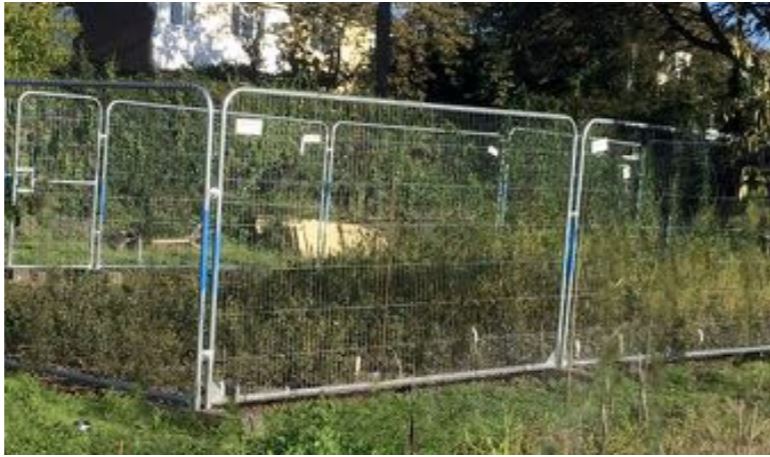 THE HISTORY SOCIETY HERITAGE OSIER BED
|
|

